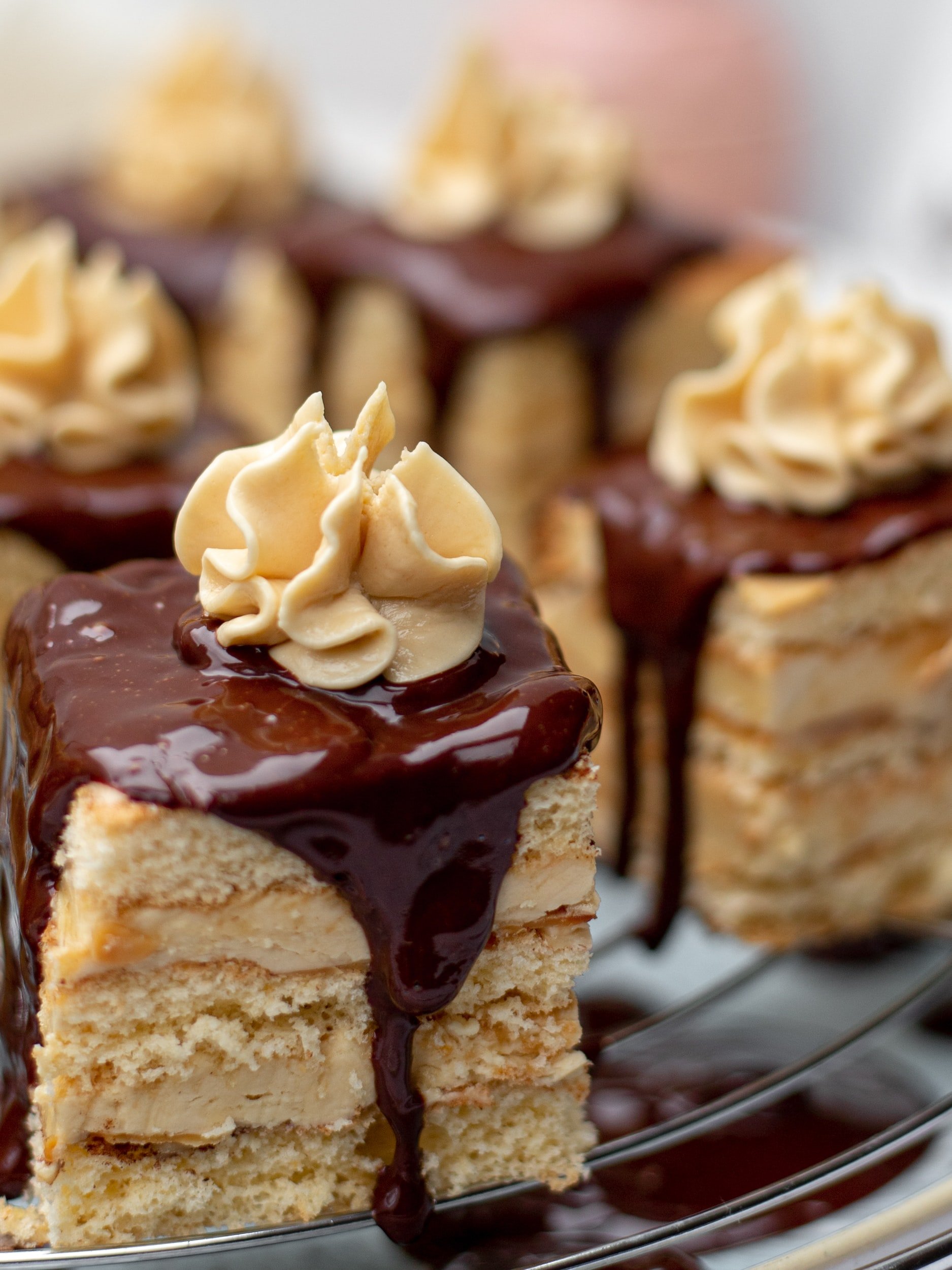What is a ganache?
In the kitchen
Ganaches have many uses, such as coatings on cakes but most often as fillings inside chocolate shells. Image by @khlebnikovayulia
Traditionally speaking, a ganache is a mixture of molten chocolate and cream, usually with the addition of some butter. In some cases there is more chocolate than cream, and in other cases there is more cream than chocolate. Ganaches can vary from firm like a dough that can be shaped to very fluid and soft like a custard when set.
Today, ganaches can be made with any water-based liquid other than cream such as fruit puree, fruit juices, champagne, coconut milk, dairy-alternative milks, and even plain water. The basis of a ganache is that it is a balance between fat (coming mostly from the chocolate) and water (coming from the cream, fruit, or other).
The ratio of fat to water will alter the constancy of the ganache when fluid and when set, alter the texture, alter how it interacts with the shell of a bonbon, and how it can be used. Although most ganaches are used to filling truffle or bonbon shells, they can also be used as fillings in cakes, tarts, or very fluid ganaches can be poured over a cake as a sort of coating.
In the lab
Me filling some shells with a fluid ganache that contains more cream or “water” than chocolate or “fat” to fill bonbon shells. Image by Bean to Bar World.
In the lab, a ganache can be looked at in a different way. It is essentially an emulsion oil-in-water emulsion. That is, a well-made ganache has tiny particles of fat (mostly from the chocolate) dispersed within a water phase (which can be cream, fruit puree, coconut milk, and so on). If the ratio of fat is too high, a ganache will “split”, that is, the emulsion breaks. You get what appears to be a thick greasy mixture more like cake batter as opposed to a homogenous mixture.
You can read more about the science behind a ganache here on one of my research summaries.
Having Trouble With Your Ganache?
If you are having trouble with your ganache recipes, you can book a tutoring lesson here where I can diagnose your issue and help you improve and better understand how to make a fantastic ganache.

